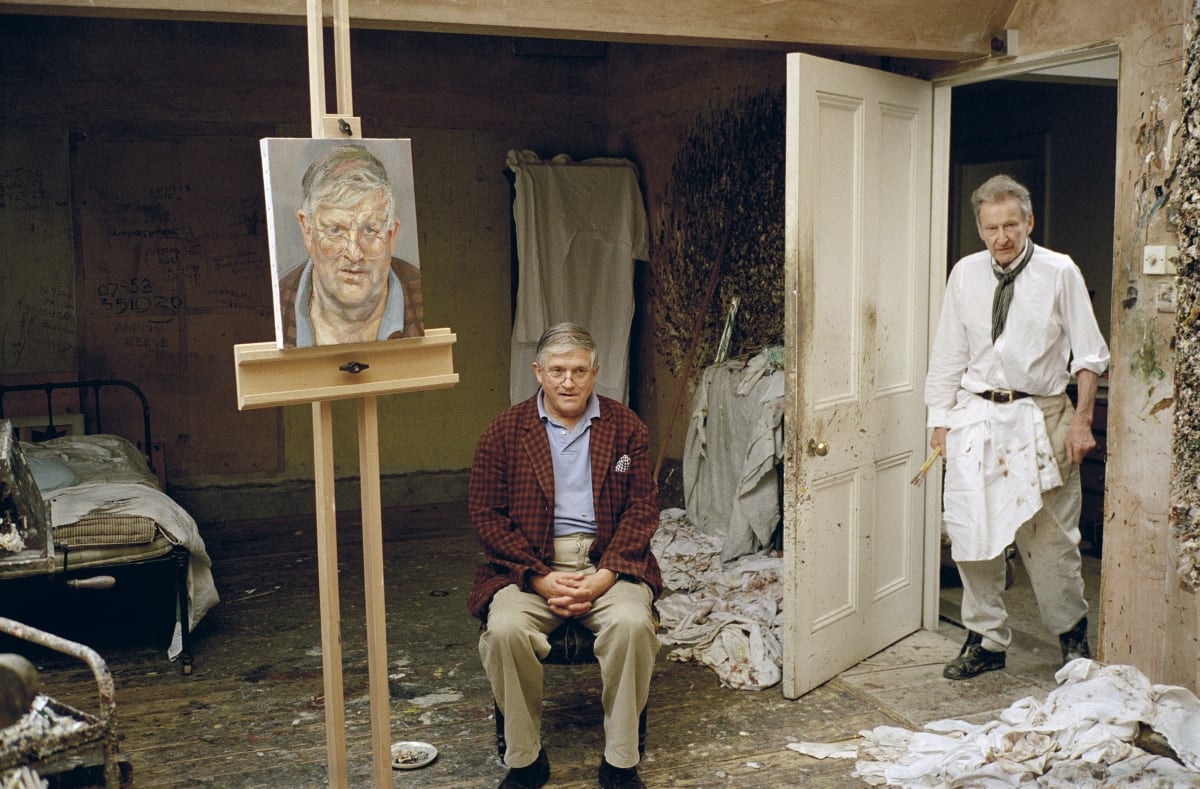I would wish my portraits to be of the people, not like them. Not having a look of the sitter, being them ... As far as I am concerned the painting is the person. I want it to work for me as flesh does
– Lucian Freud
Lucian Freud (1922-2011) is regarded as one of the most accomplished artists of the 20th century, recognised for his prodigious skill and sensibility as a figurative painter. His pictures capture the internal, as well as external, features of his sitters, who were often family, friends, lovers, and acquaintances that caught his attention. His idiosyncratic view of the world is reflected in the subjects he chose to depict, which range from monumental fleshy nudes rendered in oil paint, to detailed drawings of plants and dead animals.
Freud was born in Berlin, Germany in 1922 to an Austrian-German Jewish family. He was the son of architect Ernst Freud and grandson of founding psychoanalyst Sigmund Freud. Fleeing Nazi persecution, his family emigrated to London in 1933 where, in 1939, he became a naturalised British citizen. Freud showed early promise as an artist and was able to follow his creative passions at boarding school in Dorset, where he produced his first oil paintings and sculptures. These early works were used to secure his admission to the Central School of Arts and Crafts, London (now part of Central Saint Martins) in 1938.
The following year, seemingly frustrated with its rigid, didactic teaching style, Freud left the Central School and enrolled at the East Anglia School of Painting and Drawing in Dedham, Essex, where he trained under the school’s founder, British artist Cedric Morris. Morris’ stylistic approach to painting can be seen to influence Freud’s early portraits from this period. These works, which often feature thinly painted surfaces as well as bold lighting and framing, include Man with a Feather (1943), Man with a Thistle (Self-Portrait) (1946) (Tate, London), and Girl with a Kitten (1947) (Tate, London).
Freud began receiving critical and commercial success around this period, holding his first solo exhibition at the Lefevre Gallery, London in 1944. He became a well-known figure of the London and wider British post-war art scene progressively over the following 10 years. This status was cemented in 1954 when – alongside his contemporaries Francis Bacon and Ben Nicholson – he was chosen to represent the United Kingdom at the 27th Venice Biennale.
Towards the end of the 1950s, following his early success as a skilled representational artist, Freud began making a shift in his work towards a more expressive, painterly style typified by textured surfaces, which would become his signature aesthetic for the remainder of his career. This development is particularly prominent Woman Smiling (1958-59), where the artist’s recognisably fleshy palette and gestural application of paint begin to develop.
Freud went on to progress this style for the rest of his life, during which time his applications of paint became increasingly thick, bearing heavy and clear marks of the artist’s brush. These works were produced over extended, repeated periods in the studio with his sitters and their surfaces hold incredibly dense fields of fleshy, swelling nude tonality applied meticulously throughout these sessions.
Freud’s preeminent art has made him one of the most distinguished figures of contemporary painting. His works are held in major public and private collections across the world, including those of the Tate, London, Metropolitan Museum of Art, New York, and Museum of Modern Art, New York. Both during his life and posthumously, his work has been the subject of numerous significant retrospectives, including at the Museum of Modern Art, New York (2007-8), National Portrait Gallery, London (2012), Royal Academy of Arts, London (2019-20) and National Gallery, London (2022-23).




